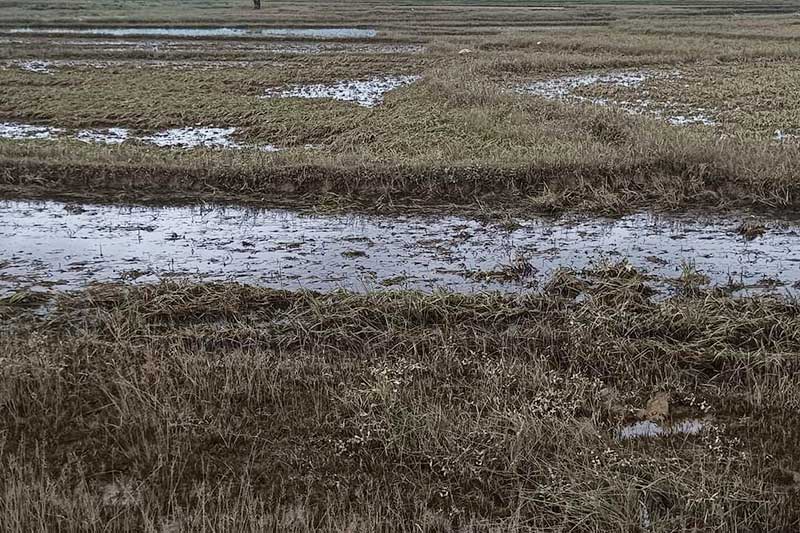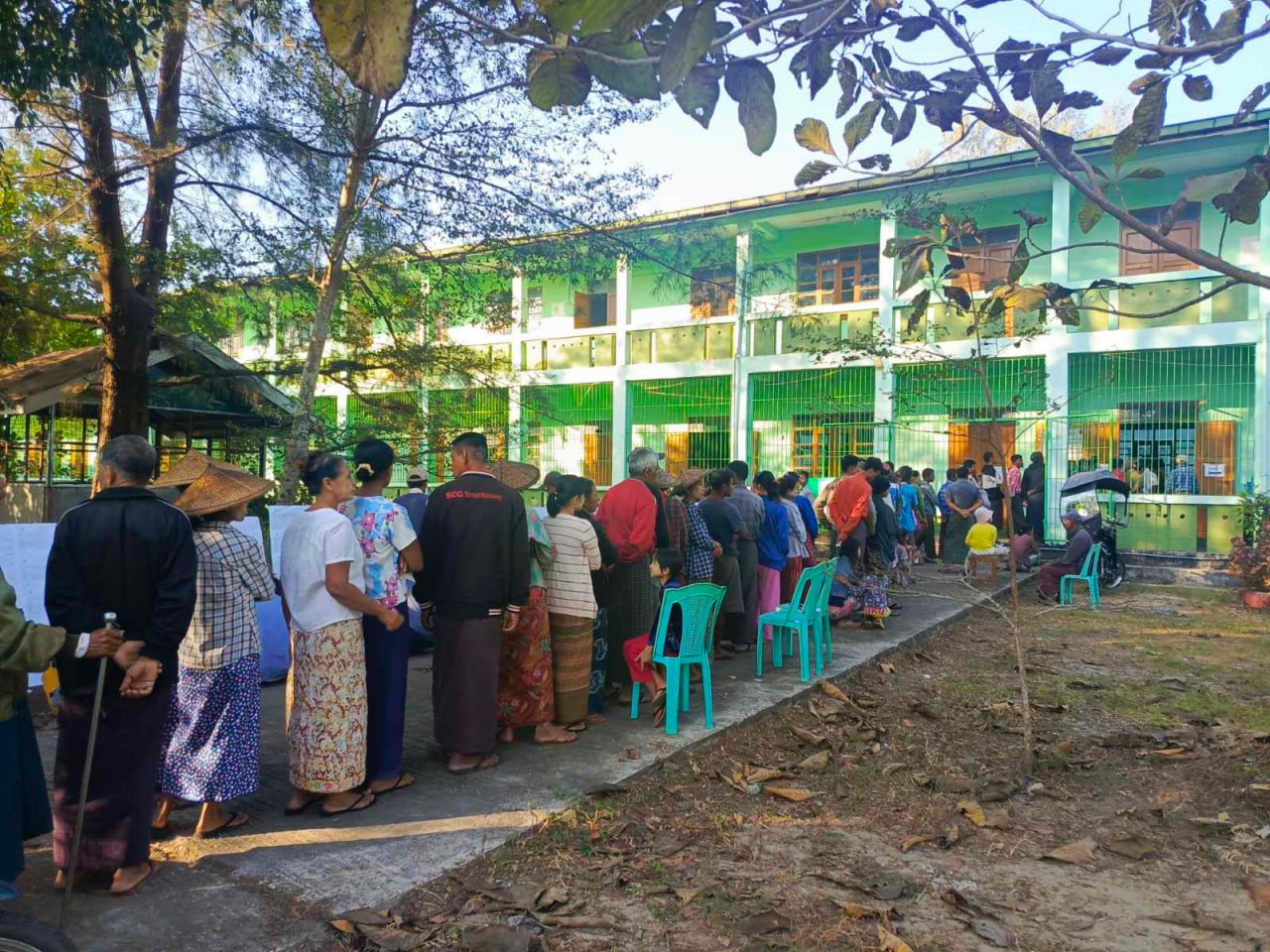- Junta unable to hold elections in dozens of wards and village-tracts in Sittwe, Kyaukphyu
- Fighting escalates between Myanmar military, Arakan Army in Ayeyarwady Region
- Regime steps up civilian arrests in Sittwe
- ULA safeguards Mrauk-U's ancient heritage
- Arakan on the Edge: What the DMG Landmine Impact Report Reveals About Myanmar's Deepening Humanitarian Crisis
Over 50,000 acres of paddy destroyed by floods across three Arakan townships
According to the Arakan Farmers Union, floods destroyed some 15,000 acres of paddy fields in Kyauktaw, some 10,000 acres in Mrauk-U and some 25,000 acres in Minbya.
12 Aug 2023

DMG Newsroom
12 August 2023, Sittwe
More than 50,000 acres of paddy fields have been destroyed by floods in Arakan State’s Kyauktaw, Mrauk-U and Minbya townships, according to the Arakan Farmers Union.
According to the union, floods destroyed some 15,000 acres of paddy fields in Kyauktaw, some 10,000 acres in Mrauk-U and some 25,000 acres in Minbya.
“We still don’t know the exact extent of the damage. It will take time to find out details,” said U Kyaw Zan, chairman of the Arakan Farmers Union.
Paddy fields were left covered in mud when the floodwaters receded.
“We can hope that rice plants will survive if it rains after flood water subsides. Rice plants were left. If it rains, rain will wash away mud. But it has not rained, and we don’t think the rice plants will survive,” said U Maung Hnaung, a farmer from Pyinyaung Village in Minbya Township.
Farmers are short of paddy seeds or saplings to replant in the event that their current paddy cannot be salvaged.
“We have grown around eight acres of farms, and all were destroyed. We don’t have either money or paddy seeds to regrow,” said Daw Hsan Hsan Win from Thayet Tabin Village in Kyauktaw Township.
The flooding came as another blow to farmers in Arakan State after many of them lost houses, paddy seed stockpiles and cattle to Cyclone Mocha in mid-May.
U Soe Naing from Teinnyo Village in Mrauk-U Township said: “Around 20 acres of farms were destroyed near our village. We have not yet received any help from authorities. They have not yet even come to survey the damage.”
The Arakan State military council said it has instructed the agriculture department to survey the damage to paddy fields caused by the flooding and report back to the council.
Thousands of people have also been temporarily displaced by floods in Arakan State, brought on by persistent rains that began in early August.






-1.jpg)










